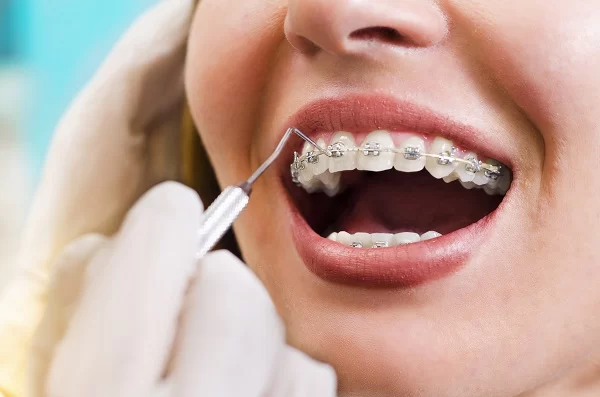
How to Choose Between Traditional Braces and Clear Aligners: Your Complete Guide
- Introduction to Traditional Braces and Clear Aligners
- Comfort and Aesthetics: Which Option is Best for You?
- Cost Comparison: Traditional Braces vs Clear Aligners
- Effectiveness of Treatment: Which Works Faster?
- How Your Lifestyle Affects Your Choice
- Real-World Examples: Braces vs Aligners
- How to Make the Right Choice for Your Smile
Introduction to Traditional Braces and Clear Aligners
Choosing between traditional braces and clear aligners is a significant decision for many seeking orthodontic treatment. Both options have distinct advantages and disadvantages depending on your needs, lifestyle, and preferences. This guide explores these two popular methods, helping you make an informed decision based on comfort, cost, effectiveness, and other factors.
Comfort and Aesthetics: Which Option is Best for You?
Traditional braces use metal brackets and wires to gradually shift your teeth. While highly effective, they can cause discomfort due to the pressure placed on the teeth and gums. Additionally, metal braces are quite noticeable, which may be a concern for those seeking a more discreet solution.
On the other hand, clear aligners, such as Invisalign, are made from smooth plastic and are removable, which means less discomfort. They are nearly invisible, making them an appealing option for individuals concerned about aesthetics. However, clear aligners may require more discipline, as they need to be worn for 20-22 hours per day to be effective.
Cost Comparison: Traditional Braces vs Clear Aligners
When it comes to cost, traditional braces are often the more affordable option. On average, braces cost between $3,000 to $7,000, depending on the complexity of the treatment. However, clear aligners typically cost more, with prices ranging from $4,000 to $8,000 or higher.
Although clear aligners tend to be pricier, they can sometimes reduce overall treatment time, which may justify the higher cost for some patients. Additionally, many dental insurance plans cover part of the cost for both options, though coverage varies.
Effectiveness of Treatment: Which Works Faster?
Traditional braces are often recommended for more complex dental issues, such as severe crowding or bite misalignments. Braces are effective at addressing a wide range of orthodontic concerns and generally work faster than clear aligners for these issues.
Clear aligners are highly effective for mild to moderate misalignments. In cases where the dental issue is not severe, aligners can sometimes achieve results more quickly than traditional braces. However, for more complex issues, aligners might take longer to deliver results.
How Your Lifestyle Affects Your Choice
Your lifestyle plays a crucial role in choosing between braces and aligners. If you have a busy schedule and prefer a more discreet treatment, clear aligners might be the right choice for you. Aligners can be removed during meals and brushing, offering convenience for those with hectic routines.
However, if you're looking for a lower-maintenance option and don't mind the visibility of braces, traditional braces could be a better fit. Braces are always on, meaning you won’t have to worry about remembering to wear them or remove them during the day.
Real-World Examples: Braces vs Aligners
Consider Sarah, a 32-year-old professional who works in a client-facing role. Sarah opted for clear aligners due to her preference for a discreet treatment. She found the convenience of removable aligners especially helpful for her work events. However, her case was relatively mild, so the aligners worked well for her.
On the other hand, John, a 15-year-old with severe overcrowding, had to go with traditional braces. Despite the aesthetic concerns, braces provided the best solution to address his dental issues effectively and efficiently.
How to Make the Right Choice for Your Smile
Ultimately, the decision between traditional braces and clear aligners comes down to your personal preferences, the complexity of your dental issues, and your lifestyle. For mild to moderate issues, clear aligners may offer more comfort and convenience. For more complex cases, traditional braces might provide faster and more effective results.
If you’re ready to take the next step in your orthodontic journey, consider consulting with a professional orthodontist who can assess your needs and guide you toward the best option for your smile. Whether you choose traditional braces or clear aligners, the right treatment will help you achieve the confident, beautiful smile you’ve always wanted.







 Jacobson and Tsou Orthodontics5.0 (3 review)
Jacobson and Tsou Orthodontics5.0 (3 review) Sedation & Implant Dentistry4.0 (484 review)
Sedation & Implant Dentistry4.0 (484 review) Blue Ridge Dental: Kemmitt, Gregory J. DDS0.0 (0 review)
Blue Ridge Dental: Kemmitt, Gregory J. DDS0.0 (0 review) SJ SUMMIT DENTAL (Navoa-Del Rosario, May Jacqueline C. DDS4.0 (10 review)
SJ SUMMIT DENTAL (Navoa-Del Rosario, May Jacqueline C. DDS4.0 (10 review) Elmwood Family Dental5.0 (1 review)
Elmwood Family Dental5.0 (1 review) Russo Family Dental4.0 (16 review)
Russo Family Dental4.0 (16 review) The Importance of Oral Health Education During Pregnancy for a Healthy Pregnancy
The Importance of Oral Health Education During Pregnancy for a Healthy Pregnancy Best Tips for Brushing Your Teeth Properly for Healthy Gums: Essential Techniques for Oral Health
Best Tips for Brushing Your Teeth Properly for Healthy Gums: Essential Techniques for Oral Health Why Skipping Dental Checkups Can Lead to Bigger Oral Health Problems
Why Skipping Dental Checkups Can Lead to Bigger Oral Health Problems Advantages of Porcelain Dental Restorations
Advantages of Porcelain Dental Restorations How Can Diabetes Cause Tooth and Gum Problems? Preventing and Managing Oral Health Issues
How Can Diabetes Cause Tooth and Gum Problems? Preventing and Managing Oral Health Issues Healthy Habits for Promoting Good Oral Health and Hygiene: Tips for a Healthy Smile
Healthy Habits for Promoting Good Oral Health and Hygiene: Tips for a Healthy Smile